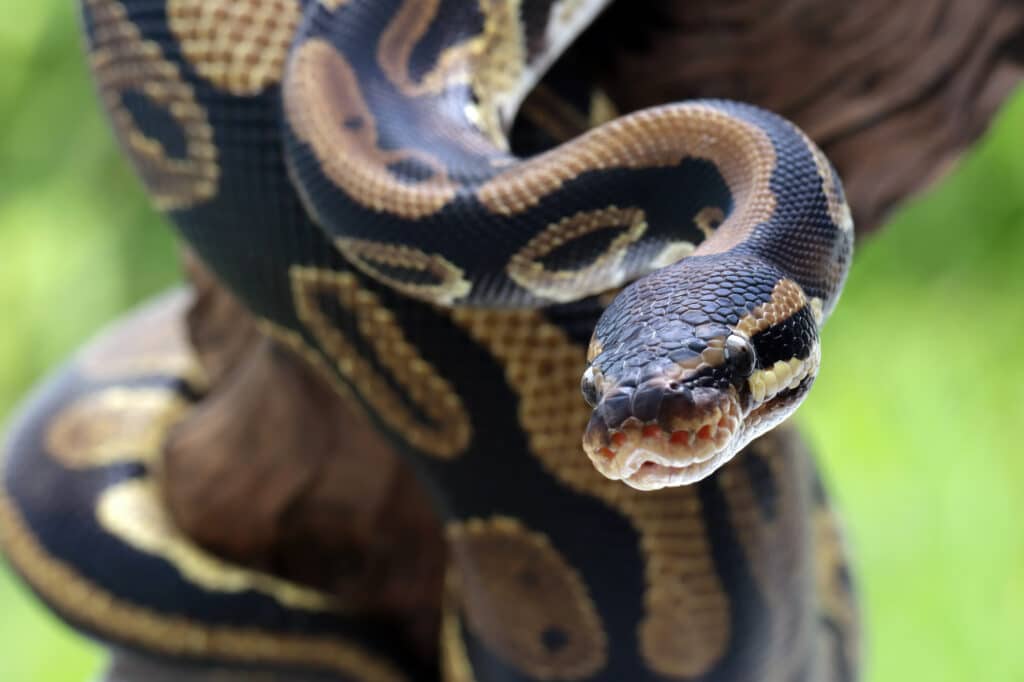Radio-tracking Burmese Pythons
[MONITORING & MANAGEMENT INVASIVE SPECIES]
Measuring up to seven metres long, and weighing in at up to 90 kilograms, the Burmese pythons are one of the largest snakes in the world. Despite being a threatened species in its native Southeast Asia, the Burmese python has established a breeding population within the tropical wetlands of Florida’s Everglades National Park, where it is now considered one of the area’s most concerning invasive species. Burmese pythons produce between 12 and 36 eggs each season, and recent research indicates the reptiles are expert navigators, able to forage for food long distances from their home territory, and easily find their way back again.
The U.S. Geological Survey estimates that there are tens of thousands of Burmese pythons living in the Everglades, and attributes significant declines in native populations to the reptile—particularly in areas where the pythons have been long-established. A 2012 study found that raccoon, opossum and bobcat populations had all fallen by more than 85 per cent since 1997, and that marsh rabbits, cottontail rabbits and foxes had effectively disappeared.
Radio-tracking Snakes
Wildlife researchers and biologists are able to radio-track Burmese Pythons with Wildlife Drones’ drone-based telemetry system. The VHF radio transmitters are implanted in the snake’s bodies since there is no other way to attach their tags.
Traditional manual tracking techniques are conducted from the ground using a hand-held antenna which is extremely difficult due to challenging landscapes and the low-powered tag signals. Another fundamental disadvantage of traditional tracking techniques is that a general receiver can only track one tagged animal at a time.
The Wildlife Drones technology allows researchers to track up to 40 uniquely tagged snakes simultaneously, while also surveying large areas via the air, saving the field team a huge amount of time and effort.

Categories: #InvasiveSpecies

